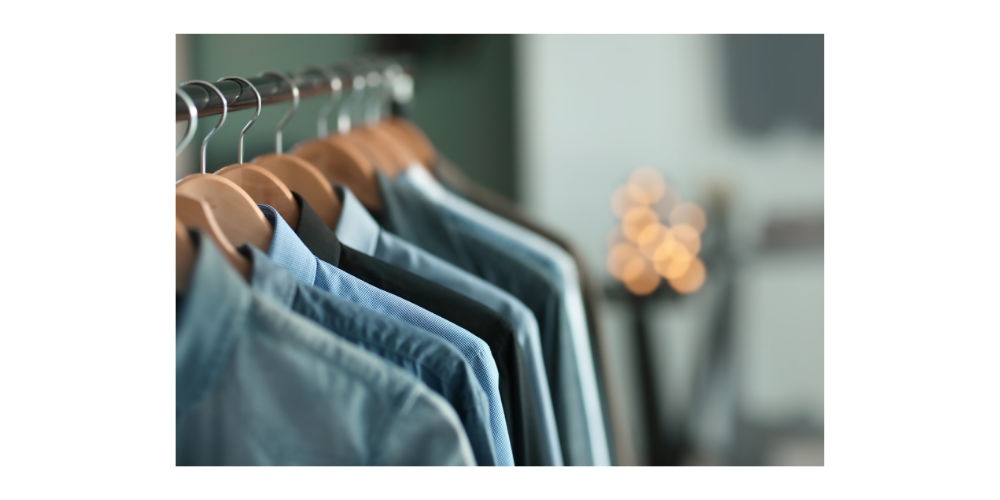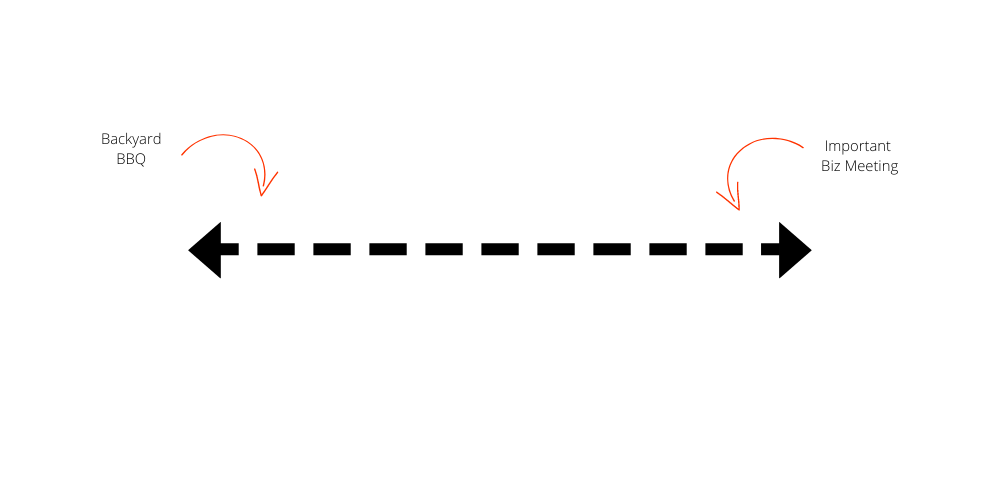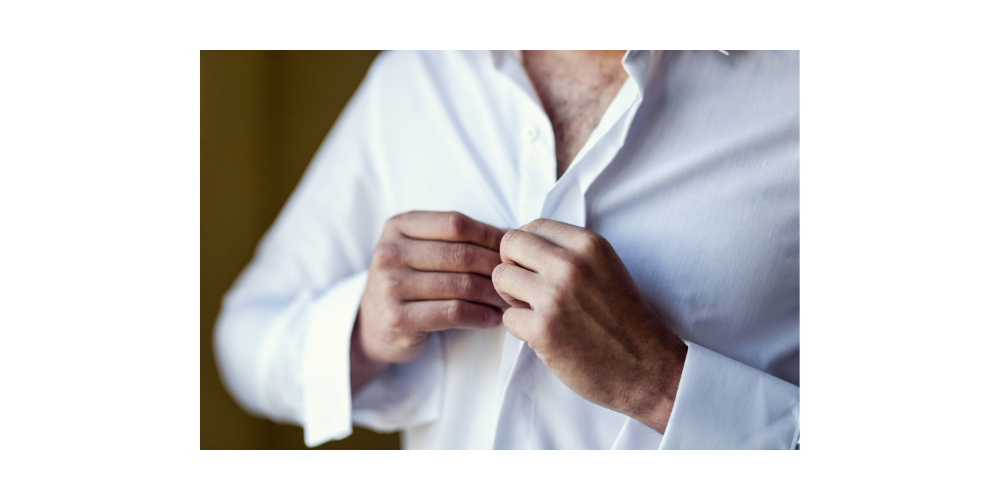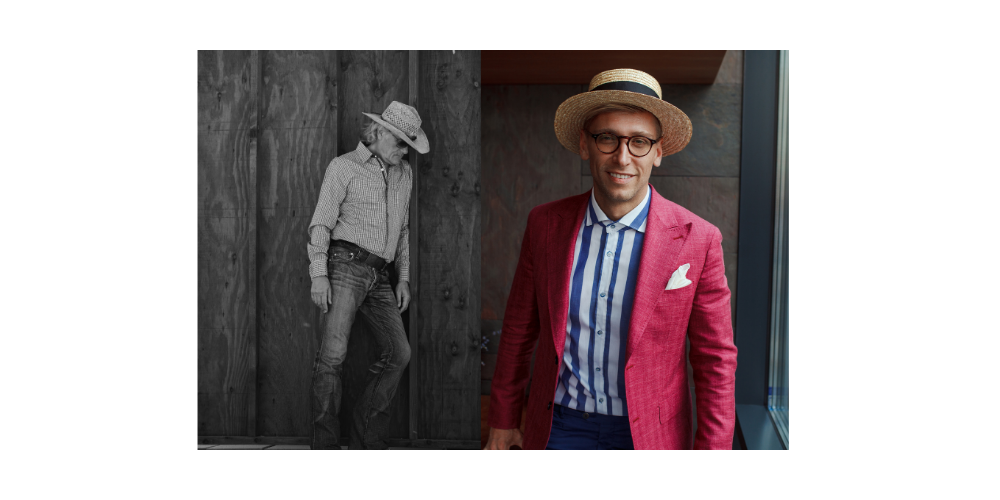How To Pair Clothing Like a Pro and Create Handsome Outfits
Far and away, the most common questions I get from men are about how to pairing clothing and creating outfits.
"What would go with this?", "Can I wear this with that?", "How would all this work together?"
For whatever reason, a mental block exists for most men when it comes to putting items together. I don't know where this block stems from, but I have some thoughts.
I'd guess a large portion of the issues comes down to "menswear rules" that were pushed upon us at some point. Things like "no white after labor day" and "all your accessories must match" can provide a useful framework. However, following all of the classic menswear rules to the letter has only put men in a self-made prison of, well, boringness.
Another reason men have trouble pairing can be chalked up to not wanting to make a mistake. We're always afraid of looking foolish; this is why you might default to the same outfit repeatedly. You know those things pair together, so you play it safe and always pair those things together.
The rules of menswear are looser than you might think, and I promise that you're selling yourself (and your clothing) short. You have the ability to make different outfits right now. Chances are you've just never tried.
When I work with a client, we don't just focus on getting new items. We focus on what's salvageable at home first, then we make some tweaks and do some tailoring if needed. Only then do we get new clothing. Clients are shocked when they realize they've only been utilizing a quarter of their clothing effectively. Your closet is likely a treasure trove of options you've never even considered (which makes knowing how to organize a man’s closet a great skill).
If you weigh yourself down with antiquated rules and fear of other's disapproval, you're going to end up wearing nothing because, according to someone, somewhere, it's wrong. You're overthinking. And it's okay, but it's time to switch things up.
The last part of this would be a lack of knowledge. This is what we’re going to focus on now. Pairing seems hard because there are so many possible combinations of things you can wear; this gives you a sense of overwhelm as you stare into your closet.
Trouble pairing and creating outfits can be easily alleviated with the right frameworks. You can make pairing incredibly easy. Here's how.
Focus on Pairing Staple Colors in Your Clothing
There is a group of colors that are easier to pair than any others: staple colors. Chiefly, black, white, and gray.
Why?
These colors are not on the color wheel; they're on the grayscale. They don't compete with one another; they're just various shades.
Various shades on the grayscale.
Also, because they're not on the color wheel, they play nice with the colors on the color wheel.
So, a healthy dose of these staple colors in the closet is needed if you want to pair things easily. At least 60%. If you're a guy who doesn't want to think about pairing color much, bump that number up. For some of my clients who are frequently on the go, living from a suitcase, that number becomes much higher because we need everything to play nice with each other.
The more different individual colors you own, the more opportunities you have to screw things up.
It's hard to pair color. Think about how much you can pair dark gray trousers with.
Now think about how much you can pair orange trousers with.
The more color you have, the more challenging getting dressed becomes. That's okay if you know what you're doing, and you have enough items to pair. If not, stick with those staple colors for now.
Most men have issues because all of the colors in their closet are competing against each other.
I get it. It's not fun to go to the store and but a plain white shirt. It's hard to justify when the more exciting shirt is sitting next to it with its colors and patterns.
So most men, understandably, opt for that. But, they opt for that every time.
Then the problem becomes evident when they return home with the umpteenth Ted Baker shirt.
Staring into the closet, they realize all of their items look like that. They're all exciting. They're all "loud." They're all competing with each other. Around this time, I get an email…
"Patrick! I have SO much clothing, but I can't pair ANY of it! Why?"
...Because you have no foundation, my man.
If we just stop trying to be exciting with color all the time, we can take a step back and see all the moving pieces; the forest through the trees.
It's not a single item that makes a great outfit. It's the cohesive effort of the whole outfit. We should focus on making sure the item can play nicely with other colors (and more as we'll focus on in a second).
Start thinking about each item in the outfit as a cog in the machine, not as the outfit MVP. The sum of all parts is what makes you look incredible.
Tone Down Your Outfit Patterns To Make Pairing Easy
Generally, like color, the more patterns you throw in an outfit, the harder they become to pair.
Let me explain the reasoning.
First, patterns generally contain multiple colors. If we have a standard blue shirt, we have only one color we're dealing with: blue.
A set of plain blue shirts.
Let's add a pattern to that same shirt.
This pattern likely contains at least two more colors. Now, we're concerned with pairing not only the blue base, but each other color added by the pattern. Now, we'll have to make sure the rest of the outfit pairs well with all of those colors, which provides more work for us and lessens our options for what we can pair.
Second, The size of the pattern can cause issues with what we can pair. It's good practice to mix up the gauge of our patterns so that they contrast each other. This way, you don't look like you're wearing the same pattern head to toe. Owning lots of patterns means that we now have to be cautious that the other items we wear do not have a similar gauge pattern.
If we lessen the number of patterned items we have in the closet and lessen the number of colors we have within those patterns, pairing will become much easier.
Match Levels of “Formality” in Your Outfits
There are multiple ways of going about deciding on an outfit. I like to start by thinking about where I'm headed and who I'm going to see. I think about the "formality level" of where I'm going.
The “formality scale” of certain occasions.
Then, I wear items that support that level.
A casual outfit will work well with more "casual" items supporting it. A formal outfit will work well with "formal" items supporting it.
For the record, I don't necessarily like thinking about items as if they can be on a scale of formal to less formal, but this is the easiest way to explain it.
Let's lay this out. We'll say a pair of black cap-toe oxford lies at the higher end of the "formality scale" and espadrilles or canvas sneakers are on the lower end of the scale. When pairing outfits, you generally want to stay within a few deviations of the items on the scale.
A “formality scale” of certain items. Every item has a location on the scale.
For an extreme example, you'd never pair a tuxedo with flip flops. Makes sense, right? Let's take it a little further…
You shouldn't pair a dress shirt with chinos or with most pairs of denim. A proper dress shirt made from poplin cotton or broadcloth with french cuffs like the one below shouldn't be paired with a regular ol' pair of denim.
The denim should be paired with something more casual like a t-shirt, polo, or oxford cloth button down. The dress shirt should be paired with something a bit dressier like proper cotton or wool trousers. See how this works?
Every item can be charted out on this formality scale. Every item has it's place. Figure out where your outfit should land on this scale, then grab supporting pieces that fall on, or just a few deviations away from your selected point.
Match Similar "Vibes” Between Clothing Items.
I'm not too fond of that word, but this is the best way to describe this. Think about the "vibe" that these outfits communicate.
Outfit examples. For the record, I endorse neither.
The left? Rugged, western, worn-in, and dusty are all things that come to mind.
The right? Colorful, flamboyant, dandy, and clean are all things that come to mind.
Imagine we married these elements together. Let's put that rugged looking western belt right thought the middle of the suit. Does that work? Of course not.
Why?
Because a belt isn't just a belt. All shirts aren't created equal. Different pants tell different stories. Individual items have "personalities." They communicate different things. They make your mind jump to associations.
Just like you want colors that play nice with each other, you want the elements of your outfit to do the same. Everything should have a cohesive feel, look, and *sigh*… "vibe."
A cowboy doesn't wear a tuxedo. James bond doesn't wear Yeezys. Figure out the "vibe" for the particular outfit you're planning to wear, then find supporting elements from head to toe. If you don't know where to find supporting elements or what your "vibe" is, you need this.
Create an Outfit With Similar Fabrics
Certain fabrics play nicely with other materials and will support certain "vibes." Let's use the example from above with our rugged vs. refined model.
Fabrics that support a more rugged style would be materials like denim, tweed, leather, twill, etc. Fabrics that support a more refined style would be specific wool blends, cashmere, silk, poplin, etc.
Think about how the fabrics in each group support the other ones. Also, note that crossover would be a bit more difficult between groups. Find fabrics that can be work together cohesively in an outfit.
Keep Your Outfit in Proportion
Let's simplify for now and think of proportions as slim vs. baggy.
Baggy pants don't look right with a tight shirt. The proportions look funky.
Imagine if a human being looked like that - had incredibly large legs and a narrow upper body. You'd look like a cartoon character - sort of a reverse Johnny Bravo.
Think about the way your silhouette appears.
When you're paring outfits, the fit of the items should be similar down the outfit. If you have a wider pant, the shirt should fit a bit looser. If you're wearing skinny jeans, a tighter tee looks congruent.
Think about the way your silhouette appears when you put on an outfit. Do you look like a cartoon character? If so, change the proportions of your items until you're happy. Or at least until you look like a cartoon character you like.
Pairing Clothing and Creating Outfits is Simple…
What we're doing with all of this is thinking about cohesiveness.
We're thinking about how everything plays together and how every item supports one another from a color, fit, and feel perspective.
Think of each item you wear as an actor playing a role in a performance (your outfit).
If each item is cast correctly for their role and the item plays that role well, then bravo. You'll put on a splendid performance with rave reviews, and I'll meet you backstage with flowers in-hand.
Break a leg.
-Patrick
PS. If you want to improve your style and grooming, making sure you’re one of the best looking guys in the room, you need to have a look at this.
PPS. I put together a training on how to look Taller and Leaner, because what guy doesn’t want that? Best of all, it’s free. Click here to get the on-demand training, free.






